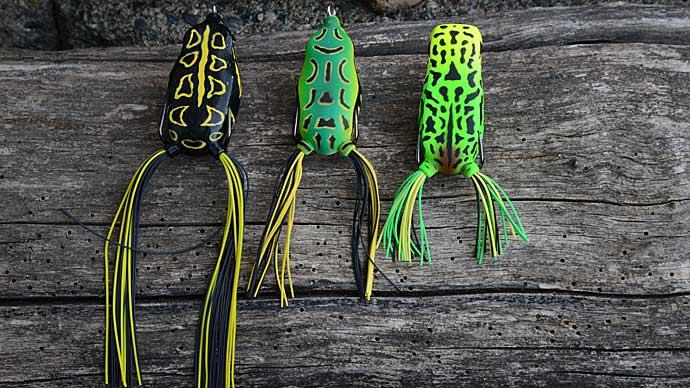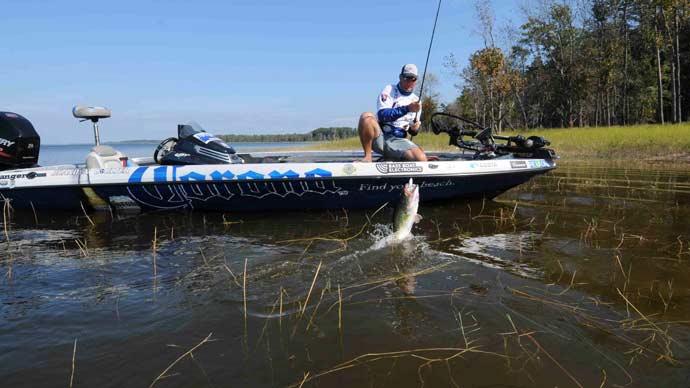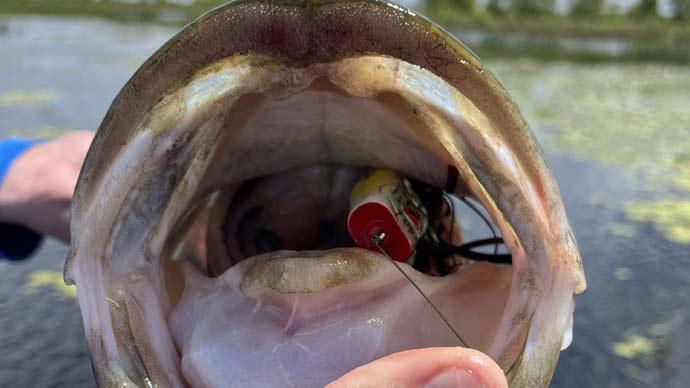
Catching bass with any lure is fun, but watching one explode on a topwater frog has to be near the top of every bass angler's list. These lures are fun to fish, get ferocious strikes, and have a knack for catching big bass. Fishing them requires the right gear and specific approach to get more bites and land a higher percentage. Here's a primer on fishing a topwater frog with success.
Types of Frogs and How to Work Them
Hollow-bodied frogs come in all shapes and sizes, depending on the brand. Still, they are relatively similar in that they typically have a double hook, soft body, and tails made of silicone skirt material. The two main styles are a standard version that will walk side-to-side and one with a cupped mouth that will pop during the retrieve. Each works well and has a time and place.
Standard walking frogs like the Spro Bronzeeye, Berkley Swamp Lord, and Strike King KVD Sexy Frog are great because you can twitch your rod and get them to "walk the dog" like any walking topwater. This is a good starting retrieve and does a great job in open water and sparse grass. A straight retrieve will get the frog to move up and down in thicker vegetation, slapping the water and making a slight commotion. These are the two main ways to fish them, and it is always a good idea to have different retrieves to see what the fish prefer.
Popping frogs will "pop" just like a topwater popper and are great for creating a little more commotion. They excel in thin layers of vegetation like duckweed and can also be fished in open water. Play with different popping actions, mixing subtle to aggressive, to see what works best that day. All the major lure companies make popping frogs, with some outstanding ones. For a unique popping-style frog from Japan, the Deps Buster K is a premium frog with unique rabbit fur tails that catch plenty of bass.
Froggin' Gear
Since most frog fishing is around grass or at least cover, it requires the right rod, reel, and line to catch more fish with frogs. Depending on the cover, frog anglers generally have one or two rods. A standard medium-heavy or heavy baitcast rod will suffice for open water and sparse grass but needs a softer tip to walk the bait effectively. A heavy or extra-heavy rod will be required in thicker grass to get the fish back after getting hooked and balled up in vegetation.
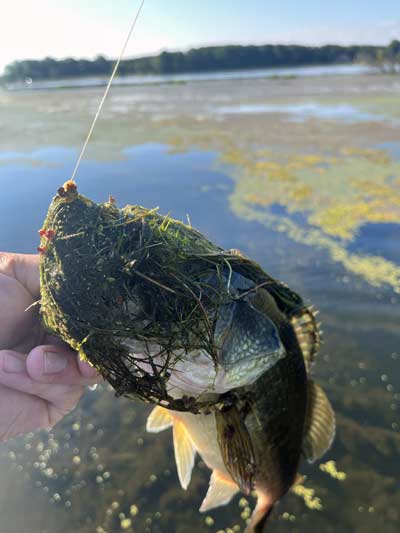
For reels, a baitcast reel with a gear ratio of around 7.1:1 will be the right speed to work the frog and will be able to handle heavier braided lines, which is a must. You can use other lines, but you risk breaking your line when pulling in a bass and countless pounds of vegetation that often come in with the fish.
A quality braided line like 50-pound Seaguar TactX has plenty of power and is thin enough to give you excellent casting distance. This braid is made of four strands of material and is rough to the touch but acts like a serrated knife to slice through grass when fighting a fish.
Vegetation is Great But Not Required
Most frog fishing is done around grass. Matted vegetation, whether it's milfoil, hydrilla, thinner duckweed, or pondweed, is a prime place to fish a frog. Frogs also excel around lily pads, and really, any overhanging cover that provides shade will be a prime spot to work your frog over. Even though most associate frogs with vegetation, it's not required.
Because frogs are designed to be weedless, they can be fished around plenty of other types of cover and structure. They are great for fishing around bushes, laydowns, and even docks. The baits' flat design also makes them great for skipping under docks and overhangs, places where bass are not used to seeing baits presented on the surface above them.
Increasing Hookup Percentage
One downfall with frog fishing is that you will almost always lose a few fish. This can happen because of many factors, some of which are out of your control. Still, you can do a few things to up your odds and catch more of what bites.
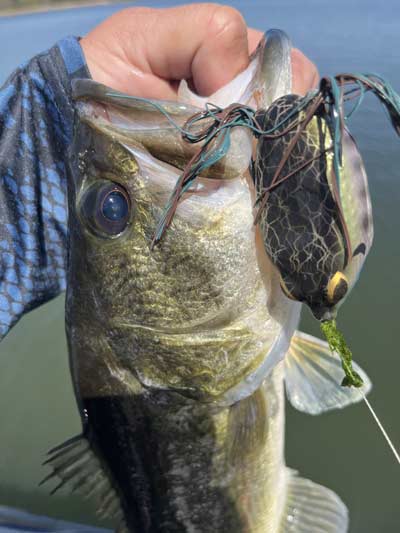
When fishing over matted vegetation, the bass often hears and senses the frog working over the mat and will blow through to get it. This is where they will sometimes miss the frog, simply because they can't see it, and it will lead to some great splashes and nothing on the end of your line. There isn't a way to prevent this, but having a follow-up bait ready to cast into the hole in the grass will give you a shot at catching that fish. Texas-rigged plastics are great for this, but the key is to be fast. Get your frog back in quickly, and then make a cast with your backup plan.
Two other things that can hurt your hookups are the hook itself and being too quick on the draw when seeing a bite. Like all topwaters, giving the fish a second or two after the splash before setting the hook is best. Otherwise, you'll pull it away from them. You'll catch more fish by training yourself to wait to feel the bait (instead of just watching the splash). You can bend the hooks out slightly to get a better gap to hook a fish. Doing this will increase your chances of catching fish, but it will make the frog less weedless. It's a tradeoff that can be worth it, especially in sparse vegetation.
Fishing a topwater frog is one of the best things about summertime fishing, but they will catch bass from spring to fall with the right gear and approach. Fishing them effectively comes down to the right gear, retrieves, and knowing where to throw them.


